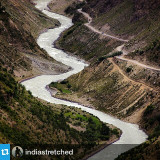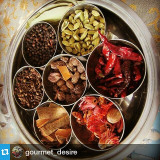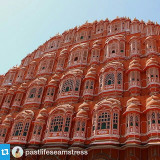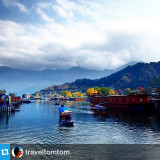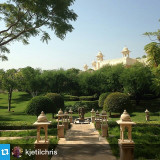Random image from our India photo collection

Pondicherry
History
Not much is known about Pondicherry before the foreign settlement started. There are evidences of the Pallava, Chola and the Vijayanagar empires around the city. What’s interesting, are the relics of Arekmedu, the famous archaeological city with a port through which major trade was conducted with the Roman Empire.
It is through this port that India used to export silk, spices, birds, lions and elephants to the Roman Empire in exchange for gold.
In the 16th century, the Portuguese first arrived here and then the following century the Danes made an appearance.
In 1673, the French arrived. Till then, Pondicherry was a weaving and fishing village. The French quarters started along the sea and extended to the south, all along the sea. The city slowly emerged with the fort at its center. The town planners tried to implement this grid system methodically. It required the reconstruction of many houses, mostly those of the Tamilians. It also required the strict implementation of regulations. In all, it took the French almost a century to implement the plan, of the present concentric pattern with the fort at the center and boulevards surrounding it. It has, however, expanded beyond the boulevard in recent years.
Today, some adjacent areas, which were previously villages, have been included within the city limits. Around the 1760's, the British destroyed the city including the fort. When the French reoccupied it, most of the buildings were reconstructed but they left out the fort & it thus remained in its destroyed state.
In the latter part of the 18th and early 19th century, Pondicherry again fell into British hands and all construction activity came to a standstill. Most of the present day buildings came up in the 19th century, which also marked the advent of water supply in the city. By the 20th century, the city had expanded to include many neighboring villages, although few changes were made to the inner city.
This French colony became a part of the Indian Union in the early 1950's, with the French voluntarily relinquishing control.
Today, the Union Territory of Pondicherry includes the other three French enclaves of Karaikal (in Tamil Nadu), Mahe (in Kerala) and Yanam (in Andhra Pradesh).
Go back
It is through this port that India used to export silk, spices, birds, lions and elephants to the Roman Empire in exchange for gold.
In the 16th century, the Portuguese first arrived here and then the following century the Danes made an appearance.
In 1673, the French arrived. Till then, Pondicherry was a weaving and fishing village. The French quarters started along the sea and extended to the south, all along the sea. The city slowly emerged with the fort at its center. The town planners tried to implement this grid system methodically. It required the reconstruction of many houses, mostly those of the Tamilians. It also required the strict implementation of regulations. In all, it took the French almost a century to implement the plan, of the present concentric pattern with the fort at the center and boulevards surrounding it. It has, however, expanded beyond the boulevard in recent years.
Today, some adjacent areas, which were previously villages, have been included within the city limits. Around the 1760's, the British destroyed the city including the fort. When the French reoccupied it, most of the buildings were reconstructed but they left out the fort & it thus remained in its destroyed state.
In the latter part of the 18th and early 19th century, Pondicherry again fell into British hands and all construction activity came to a standstill. Most of the present day buildings came up in the 19th century, which also marked the advent of water supply in the city. By the 20th century, the city had expanded to include many neighboring villages, although few changes were made to the inner city.
This French colony became a part of the Indian Union in the early 1950's, with the French voluntarily relinquishing control.
Today, the Union Territory of Pondicherry includes the other three French enclaves of Karaikal (in Tamil Nadu), Mahe (in Kerala) and Yanam (in Andhra Pradesh).
Go back


